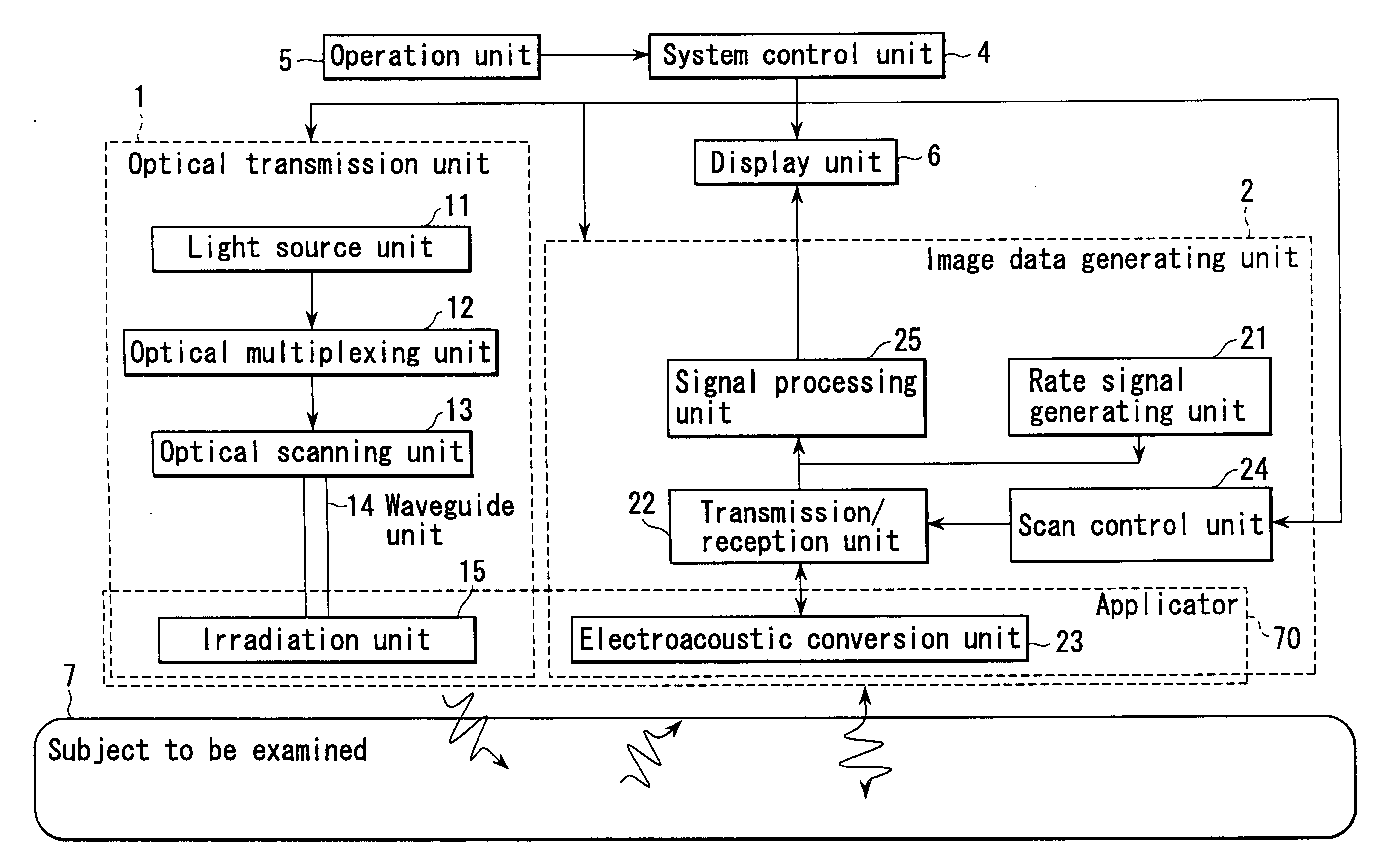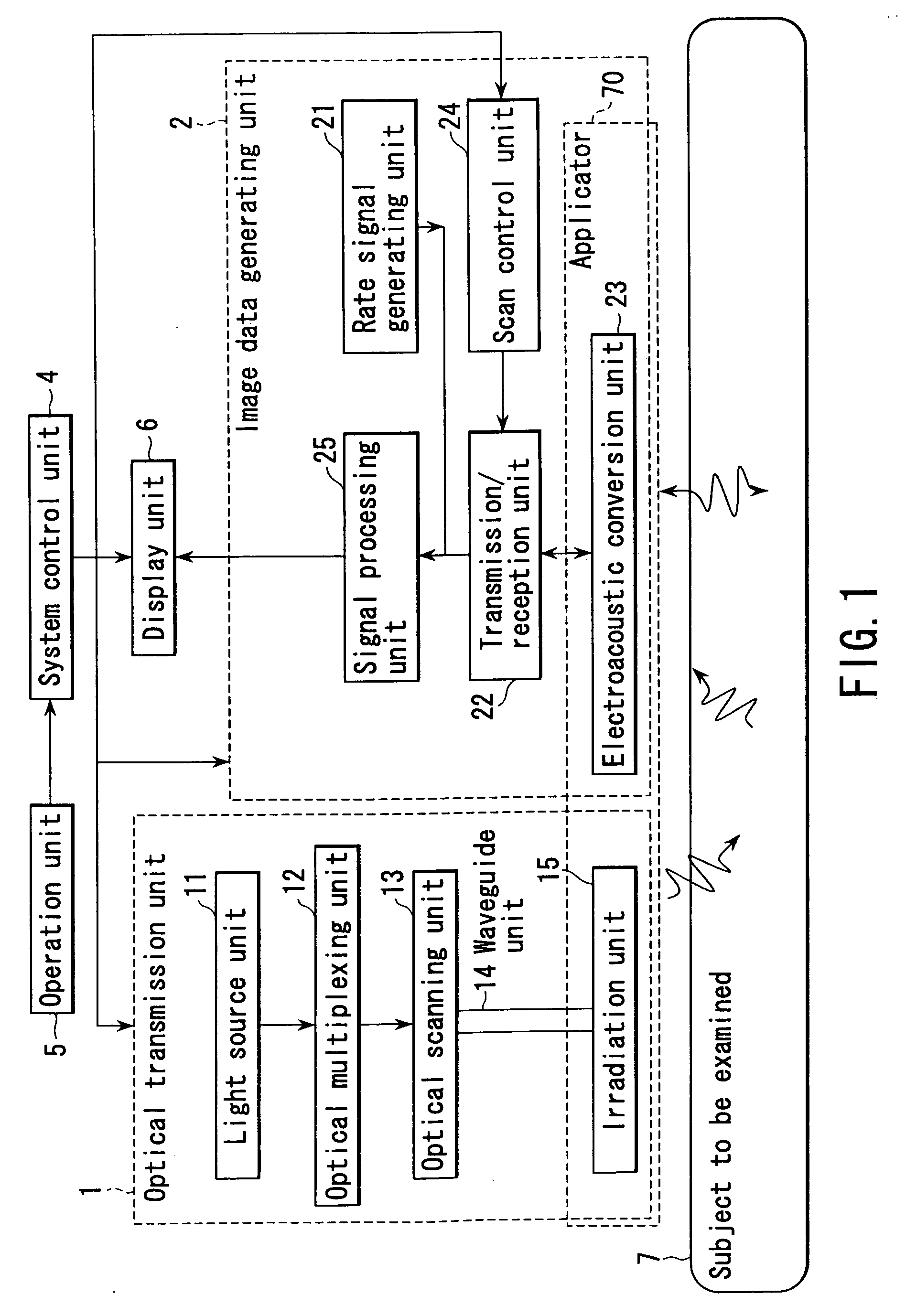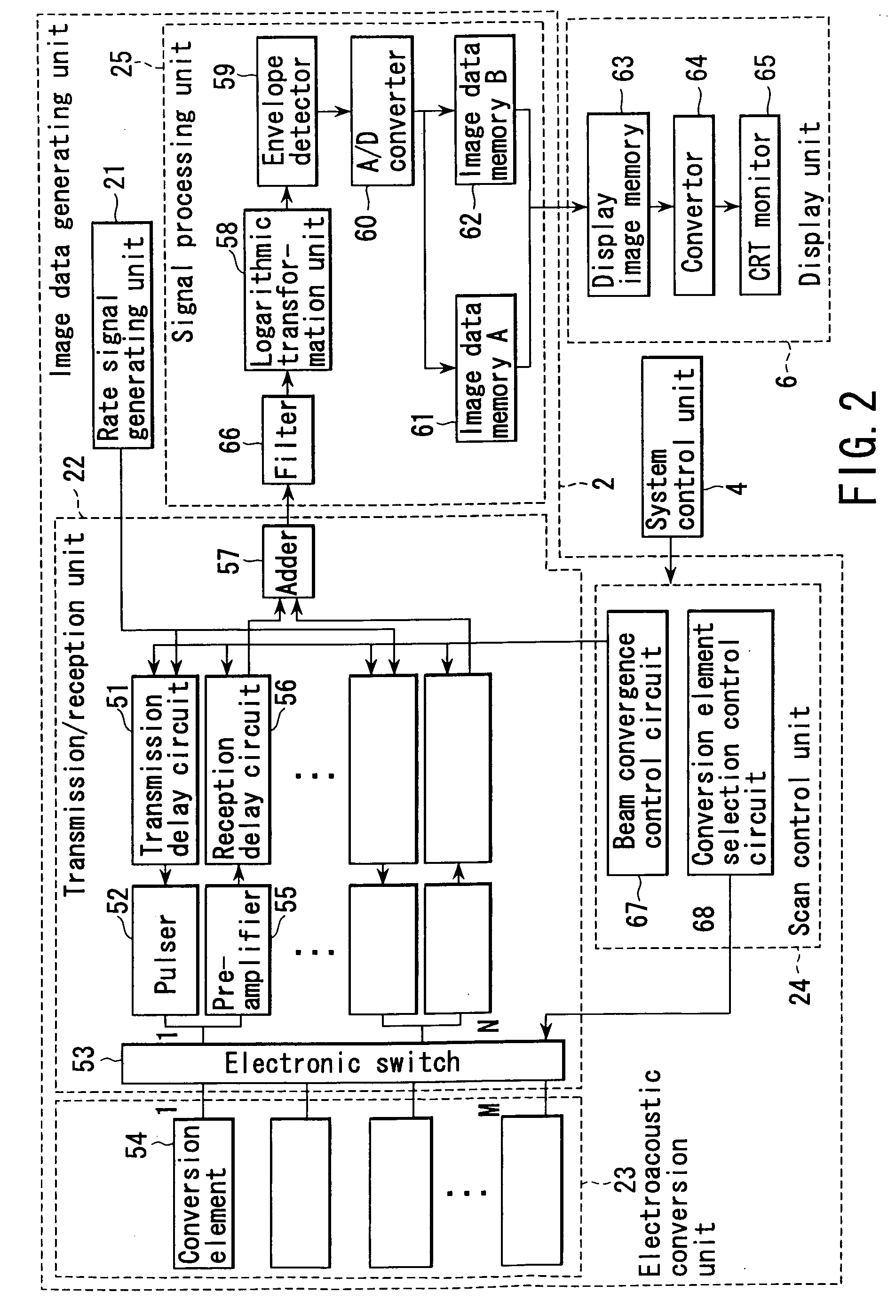Method and apparatus for forming an image that shows information about a subject
a technology of information and images, applied in the field of methods and apparatus for forming images, can solve the problems of affecting the operation of the subject, and introducing the possibility of biohazard contamination to the subject and the operator, and achieves the effects of high contrast resolution, high spatial resolution, and easy operation
- Summary
- Abstract
- Description
- Claims
- Application Information
AI Technical Summary
Benefits of technology
Problems solved by technology
Method used
Image
Examples
first embodiment
The first embodiment is a subject-information imaging apparatus that can form an image showing a hemoglobin distribution in the subject, which will be used to diagnose breast cancer. The apparatus is characterized in that the electroacoustic conversion unit is integrally formed with the irradiation unit. That is, the optical fibers of the irradiation unit have their output ends held between the electroacoustic transducer elements arrayed in the electroacoustic conversion unit. The apparatus can perform a photoacoustic imaging method and a conventional pulse echo method, by using this electroacoustic conversion unit, to combine and display the image data items obtained from the same region in the subject.
Hereinafter, the sound waves generated by the photoacoustic imaging method will be referred to as “acoustic waves” and the sound waves transmitted / received by the general pulse echo method will be referred to as ultrasonic waves”.
The subject-information imaging apparatus according...
second embodiment
The second embodiment of the present invention will be described with reference to FIGS. 7A to 7C. In the second embodiment, the harmonic imaging method acquires ultrasonic image data. The method of acquiring photoacoustic image data and the method of transmitting ultrasonic waves in the pulse echo method, both performed in this embodiment, are identical to those used in the first embodiment. Therefore, they will not be described.
In the photoacoustic imaging method, the frequency spectrum of an acoustic wave ranges from 200 kHz to 2 MHz, with 1 MHz being the center frequency. The conversion elements 54 of the electroacoustic conversion unit 23 must have properties that correspond to such frequency components. The center frequency is lower than the center frequency (for example, fo: 3.5 MHz) that is applied in standard pulse echo methods.
In the first embodiment, the same conversion elements 54 acquire both the photoacoustic image data and the ultrasonic image data. Thus, the ult...
third embodiment
The third embodiment of this invention is a simplified reception method that may be employed in photoacoustic imaging. This reception method will be described with reference to FIG. 8. The method of acquiring ultrasonic image data and the method of irradiating a subject, both performed in the photoacoustic imaging method in this embodiment, are identical to those employed in the first embodiment. They will not be described.
FIG. 8 shows the position where irradiation light is applied and the positions where acoustic waves are applied, in the third embodiment. The subject 7 is irradiated with light applied through an optical fiber 71-1 as shown in FIG. 8. The light travels straight, while maintaining its small diameter. That is, it exhibits good directivity. Therefore, a photoacoustic image can be generated without performing phased addition processing at the time of reception of acoustic waves.
In the first scan in photoacoustic imaging, the subject 7 is irradiated with light emit...
PUM
 Login to View More
Login to View More Abstract
Description
Claims
Application Information
 Login to View More
Login to View More - R&D
- Intellectual Property
- Life Sciences
- Materials
- Tech Scout
- Unparalleled Data Quality
- Higher Quality Content
- 60% Fewer Hallucinations
Browse by: Latest US Patents, China's latest patents, Technical Efficacy Thesaurus, Application Domain, Technology Topic, Popular Technical Reports.
© 2025 PatSnap. All rights reserved.Legal|Privacy policy|Modern Slavery Act Transparency Statement|Sitemap|About US| Contact US: help@patsnap.com



